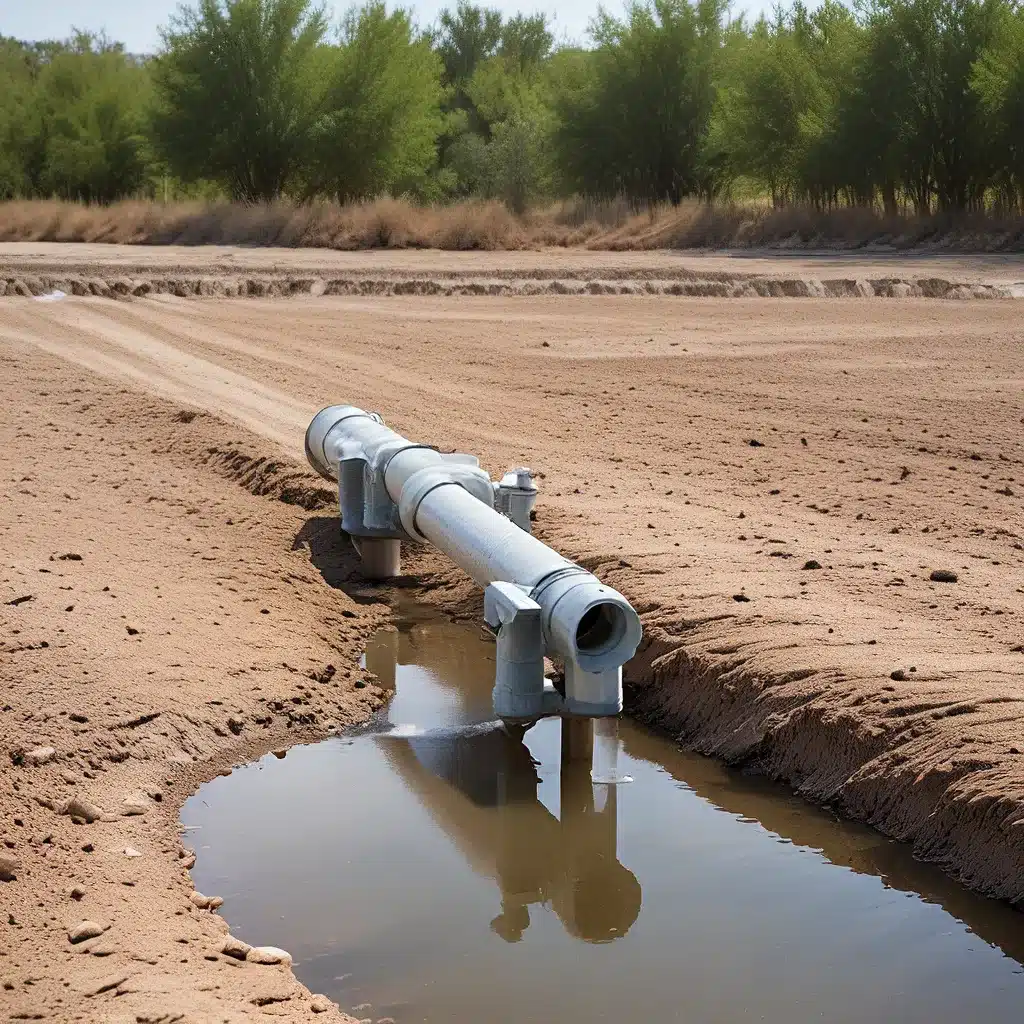
“Water, water, everywhere, and not a drop to drink,” the old saying goes. Well, my friends, the future of water management may just prove that adage wrong. Join me as we dive into the innovative world of groundwater recharge and aquifer storage – the cutting-edge solutions that could unlock a sustainable water future.
Quenching a Thirsty Planet
As the global population continues to surge and climate change wreaks havoc on traditional water sources, the need for innovative water management strategies has never been more pressing. And let me tell you, the water wizards of the world have been hard at work, cooking up some truly ingenious solutions.
One of the most promising avenues? Groundwater recharge and aquifer storage. These techniques, which involve intentionally replenishing underground water reserves, are quickly becoming the talk of the town in the world of water sustainability.
Just imagine it – instead of letting all that precious rainwater and surface water go to waste, we can capture it and stash it away for a rainy day (pun intended). By strategically recharging aquifers, we can create a sort of “water bank” that can be tapped into during times of drought or high demand.
The Aquifer Advantage
Now, you might be wondering, “But wait, isn’t groundwater already an important water source?” Absolutely! In fact, according to the National Groundwater Association, groundwater accounts for nearly half of the world’s drinking water supply. It’s a crucial resource that many communities rely on.
The challenge, though, is that groundwater resources are often overexploited or contaminated, leading to dwindling supplies and declining water quality. That’s where the magic of aquifer storage and recovery (ASR) comes in.
ASR systems work by injecting treated surface water, reclaimed water, or even stormwater directly into aquifers during times of abundant supply. This replenishes the underground reservoirs, ensuring that they’re ready to be tapped when the dry spells hit.
A Diverse Toolkit
But wait, there’s more! Groundwater recharge and aquifer storage aren’t one-size-fits-all solutions. Nope, the water wizards have developed a whole toolkit of techniques to suit a variety of local conditions and needs.
For example, in areas with high evaporation rates, managed aquifer recharge (MAR) systems can be used to intentionally infiltrate water into the ground, rather than losing it to the atmosphere. These systems can harness everything from stormwater to recycled wastewater to replenish aquifers.
In other regions, soil aquifer treatment (SAT) may be the way to go. This approach uses the natural filtration properties of the soil to clean and recharge groundwater supplies, all while minimizing the need for energy-intensive treatment facilities.
And let’s not forget about the good old-fashioned infiltration basins – essentially, glorified ponds that allow water to gradually seep into the ground and recharge aquifers. These low-tech solutions can be a game-changer in water-stressed areas.
Tackling the Challenges
Of course, as with any innovative technology, there are hurdles to overcome. Groundwater recharge and aquifer storage aren’t exactly as simple as turning on a tap.
For starters, there are regulatory and permitting challenges to navigate. Different regions have their own rules and regulations when it comes to managing groundwater resources, and getting the necessary approvals can be a real headache.
Then there’s the issue of water quality. Injecting water into aquifers requires meticulous treatment and monitoring to ensure that the stored water remains clean and safe for future use. Contamination is a big no-no.
And let’s not forget about the financial considerations. Implementing these systems can be a significant investment, with the costs of infrastructure, operations, and maintenance adding up quickly. Securing funding and demonstrating the long-term benefits can be a real hurdle.
But you know what they say – where there’s a will, there’s a way. And the water wizards are certainly determined to overcome these challenges and make groundwater recharge and aquifer storage a reality.
Pioneering Partnerships
One key to success? Collaboration. Water management is a complex and multifaceted challenge, and it’s going to take a village to solve it.
In the San Joaquin Valley of California, for example, water agencies, farmers, and researchers are teaming up to explore innovative groundwater recharge strategies. They’re testing everything from managed aquifer recharge to on-farm recharge, all with the goal of replenishing the region’s depleted aquifers.
And it’s not just happening in California. Across the globe, public-private partnerships are springing up to tackle the water crisis. Water utilities are collaborating with technology firms, environmental groups, and even community organizations to develop and deploy these cutting-edge solutions.
The key is finding the right mix of expertise, resources, and local knowledge to create tailored, sustainable water management strategies. It’s a complex dance, but the rewards could be immense.
A Future Beneath Our Feet
As we gaze into our crystal balls (or, you know, just look at the data), it’s clear that groundwater recharge and aquifer storage are poised to play a crucial role in shaping the water landscape of the future.
Sure, there are still challenges to overcome, but the potential benefits are hard to ignore. Imagine a world where we can reliably and sustainably tap into our underground water reserves, even during the worst droughts. A world where water scarcity is a thing of the past, and communities can thrive without constantly worrying about their next drop.
It’s an ambitious vision, to be sure, but one that’s well within our reach. All it takes is a little innovation, a lot of determination, and a whole lot of teamwork.
So, my friends, let’s roll up our sleeves and get to work. The future of water is waiting, and it’s buried deep beneath our feet. Who’s ready to dive in?
Don’t forget to check out Inland Waters Inc. for more cutting-edge water management solutions and insights. Together, we can tap into a brighter, more water-secure future.


